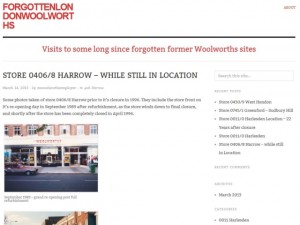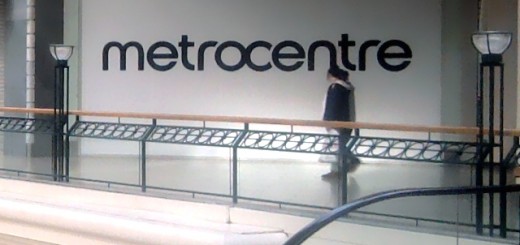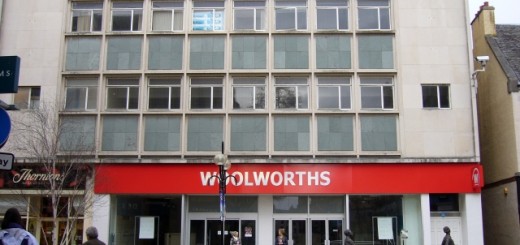Hunting for long-gone Woolies stores in Harrow and Sudbury Hill
It’s been great to see a new Woolworths-related history blog appear this week, courtesy of longstanding former Woolies staff member Stuart Kew.
His blog, Forgotten London Woolworths, does exactly what it implies, visiting “some sites of former Woolworths stores that were closed in the London area long before the company finally ceased trading in January 2009”, with Stuart having the advantage – and insider knowledge – of having worked for the company for almost 20 years between the mid-1980s and the mid-2000s, latterly in a head office management role.
There’s plenty of material for him to work with, too – though there were still 105 live stores in Greater London at the time of Woolworths collapse, there’s something in the area of 150 additional London locations that played host to a Woolworths store at one time or another, of which I’ve only visited 22 to date. I haven’t yet had chance, however, to feature all those stores here, given that my rate of collecting ex-Woolies is far exceeding my capacity to write about them.
So, it’s good that a couple of Stuart’s first blogs have prompted me to leap into action on that front. Back in June 2010, when I was still fairly new to both blogging and my Woolworths searches, you may recall that I paid a visit to Harrow, tracking down the large former store in the St George’s shopping centre (store #1198). Empty at the time of my visit, the unit reopened as Wilkinson in early 2011, ensuring that Woolies’ replacement in Harrow was what is probably its nearest modern equivalent as far as offer and instore feel is concerned.
What I hadn’t appreciated at the time, however – but discovered fairly swiftly afterwards – was that the St George’s Woolworths was a replacement for an earlier one in Harrow, located not too far away at 269-271 Station Road (store #406) and opened on 20 September 1930. Fortunately, having an inkling that it looked vaguely Woolies-esque behind its current Yates’s frontage and faux-old first-floor windows, I’d taken a photograph of it anyway.
Initially I was a bit confused by the chronology, given that the St George’s store had been given a completely new store number, rather than the old one being reused. Did this mean that there had been a gap between the old store closing and the new one opening, rather than it being a straight relocation? Well, apparently not.
Though Woolworths’ usual practice into the 1980s – such as at Burton upon Trent – was just to transfer the old store number over to a relocated store, my impression now is that openings from about the 1990s onwards were given a new number regardless of whether they were completely new stores or relocations of existing ones.
As far as Harrow is concerned, one of Stuart’s blogs from the last week usefully pins down 406’s closure to April 1996, and confirms what I’d heard elsewhere that 1198 had opened immediately afterwards. In a second blog, a series of photographs from 1989 and 1996 show the Harrow Woolworths while still trading, with the familar shopfront and what look to be the original 1930s windows ensuring that it looks much more like a purpose-built Woolies than it does in its modern-day Yates’s incarnation.
Just a few miles down the road, the long-gone Woolworths at 1269 Greenford Road in Sudbury Hill (store #745) is another one on my ‘to blog about’ list that Stuart has covered in one of his own blogs. Closed, according to Stuart, in 1974, it would have been a relatively short-lived store by Woolworths’ standards, with its store number pointing to a 1939 opening. Trading as Iceland today, I didn’t know until I read Stuart’s blog that it was previously a branch of Bejam, the larger and longer-established frozen food chain that Iceland acquired in 1989.
With that Woolworths shut, one of the closest alternative branches would have been a couple of miles along Greenford Road at 48-50 The Broadway, in Greenford. Opened as store #512 on 9 September 1933, it was later renumbered as #2023 in about 2000, at the point where it was converted to the new ‘Woolworths General Store’ format. Though that concept turned out to be shortlived, the store continued to trade – still under its General Store fascia – until Woolworths’ collapse. Coincidentally, that store too is now an Iceland, though it was missing the part of its fascia that says so at the point where I visited a year ago.
If you’ve read my blog from earlier this month, you’ll know that Iceland is at #3 in my chart of retailers who have picked up the stores vacated by Woolworths’ demise, trumped only by B&M and Poundland. What’s interesting, however, is that Iceland is one of only two retailers – along with Tesco – that ranks among the top ten occupiers of old Woolworths sites as well; in other words, any of those locations that Woolworths had already closed or relocated from prior to December 2008.
While many of the occupiers of long-gone Woolworths are what we might think of as ‘legacy retailers’ – such as Superdrug, Boots and Argos – who have been around for a long time, those occupying the post-2008 sites tend to be value retailers that have only come to prominence in recent years.
It’s a sign of Iceland’s resilience and continued relevance to consumers that its presence across the ex-Woolies estate, from Greenford Road to Greenford, should incorporate the recently vacated stores just as much as it does the long-vanished ones.
My retail consultancy business, CannyInsights.com, provides bespoke place- and sector-specific market intelligence, including coverage of supermarkets and of ex-Woolworths locations nationwide. It also works with retailers to improve their stores, customer communications and market knowledge. For more information, visit www.cannyinsights.com, drop me an email, or give me a call on (0191) 461 0361.















